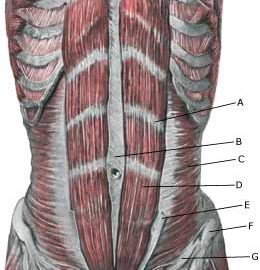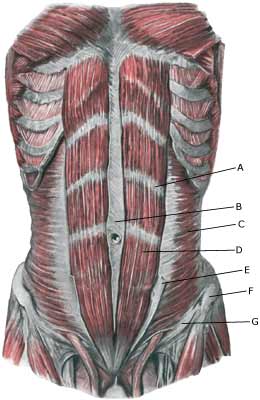|
||
|
||
|
||
| Cause: Inflammation of the tendon (tendinitis) occurs upon repeated uniform (over)loads. Microscopic ruptures can thus occur in the tendon and in particular at the fastening on the pubic bone, causing an inflammation. Tendinitis is a warning that the exercise load is too strenuous for the muscle tendon in question, and that if the load is not reduced a rupture can occur, with a significantly longer subsequent rehabilitation period. In some cases the inflammation can spread to the pubic joint (osteitis pubis).
Symptoms: Pain around the abdominal muscle fastening on the pubic bone, worsening when applying pressure, stretching and activation of the abdominal muscles (sit-ups, stomach crunches). Acute treatment: Click here. Examination: In light cases, medical examination is not necessarily required. Severe cases or cases not improved by treatment, should be evaluated by a doctor to make a precise diagnosis. A normal medical examination is usually sufficient in order to make the diagnosis. If upon examination there is pain when applying pressure on the muscle fastening in the groin, worsening at the same location upon stretching and activation (sit-ups), there is hardly any doubt concerning the diagnosis even though the diagnosis of groin pain can be particularly difficult (article). However, if there is any doubt concerning the diagnosis an ultrasound scan can be performed. Ultrasound examination is well suited to evaluate the muscles in the area. Treatment: The treatment usually consists of relief and cautious rehabilitation. In case of lack of progress with rehabilitation, medical treatment can be considered in the form of rheumatic medicine (NSAID) or the injection of corticosteroid along the inflamed part of the muscle fastening on the pubic bone. Surgery is rarely necessary (and the results are not convincing). Complications: If satisfactory progress is not achieved, it should be considered whether the diagnosis is correct or whether complications have arisen. In particular the following should be considered:
Special: Shock absorbing shoes or inlays will reduce the load on the muscle fastenings. In case of lack of progress or relapse after successful rehabilitation, a running style analysis can be considered to evaluate whether correction of the running style should be recommended. |



